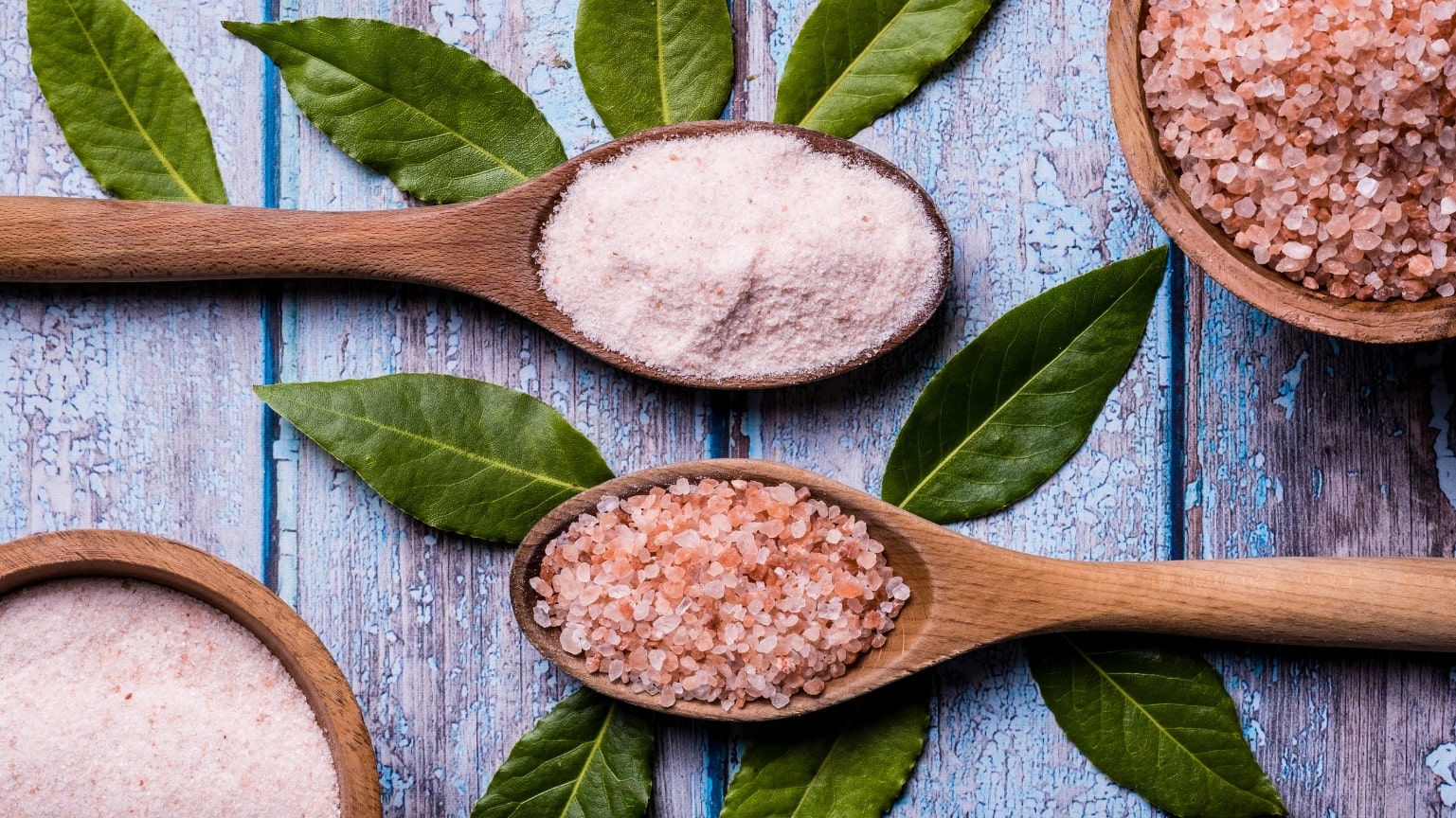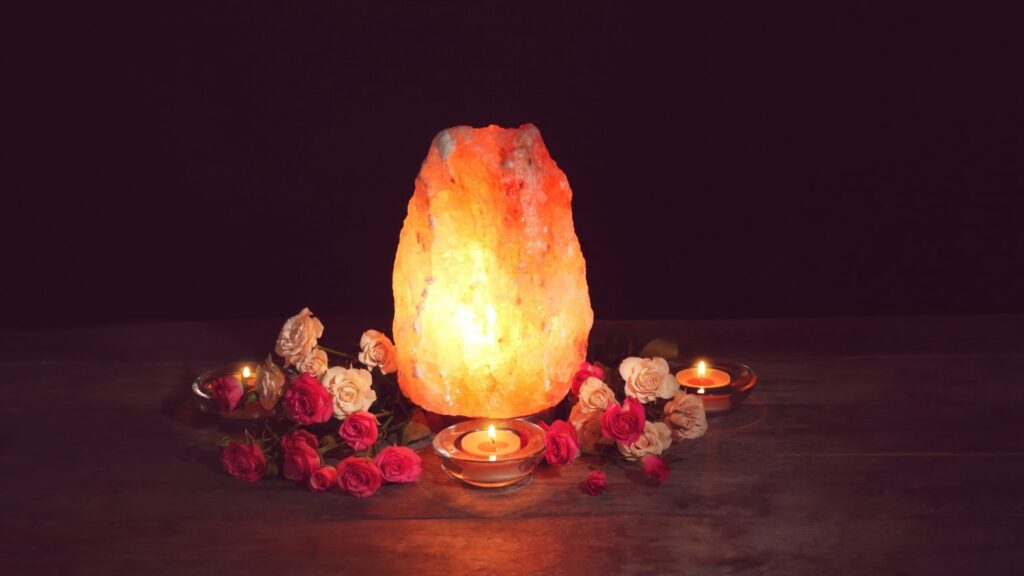
What is Himalayan salt good for?
Himalayan pink salt, often touted as the “purest salt on earth,” has gained popularity not only for its unique colour and distinctive flavour but also for its potential health benefits. Mined from the ancient salt beds in the Himalayan Mountains, this rosy-hued salt is rich in minerals and trace elements, offering a range of advantages for overall well-being.
1. Mineral-Rich Composition
One of the key attributes that sets Himalayan pink salt apart from common table salt is its mineral content. This salt contains a spectrum of essential minerals, including potassium, magnesium, calcium, and iron. These minerals play crucial roles in various bodily functions, such as maintaining fluid balance, supporting nerve function, and promoting bone health.
2. Balancing Electrolytes
Electrolytes are essential for maintaining proper hydration and supporting various physiological processes in the body. Himalayan pink salt contains a balanced combination of sodium and other minerals, aiding in the regulation of electrolyte balance. This balance is vital for muscle function, nerve transmission, and overall hydration.
3. Alkalizing Properties
The pH level of the body is a critical factor in maintaining optimal health. While excessive consumption of table salt can contribute to acidity, Himalayan pink salt is believed to have alkalizing effects on the body. A more alkaline environment may help counteract the acidic conditions associated with certain health issues and promote a more balanced internal pH.
4. Respiratory Health

Inhalation therapy, also known as salt therapy or halotherapy, involves inhaling microscopic salt particles. Himalayan pink salt lamps and salt caves have gained popularity for their potential respiratory benefits. It is believed that inhaling salt particles can help reduce inflammation, alleviate respiratory conditions such as asthma and allergies, and promote overall respiratory well-being.
5. Detoxification
The minerals present in Himalayan pink salt are thought to support the body’s natural detoxification processes. These minerals may help flush out toxins, promote liver function, and support the elimination of waste from the body. Incorporating this salt into a balanced diet may contribute to a holistic approach to detoxification.
6. Regulating Blood Sugar Levels
Some studies suggest that Himalayan pink salt may have a lower impact on blood sugar levels compared to regular table salt. While moderation is key, individuals with diabetes or those aiming to regulate their blood sugar levels may find Himalayan pink salt to be a preferable option.
7. Culinary Delight with Health Benefits
Beyond its potential health benefits, Himalayan pink salt has become a popular choice among chefs and home cooks for its unique flavour profile. The salt’s subtle, nuanced taste enhances the overall culinary experience, making it a versatile and delicious addition to a variety of dishes.
Can we eat Himalayan pink salt daily?
While Himalayan pink salt can be incorporated into a daily diet, moderation is key. It is a source of essential minerals and can add a unique flavour to dishes, but excessive salt intake, regardless of the type, can contribute to health issues such as high blood pressure. The recommended daily salt intake for adults is typically around 2,300 milligrams, and exceeding this limit may have adverse effects on cardiovascular health.
Therefore, it’s advisable to be mindful of overall salt consumption from all sources, including Himalayan pink salt, and to consider individual health conditions. Consulting with a healthcare professional can provide personalized guidance on incorporating Himalayan pink salt into a balanced and healthy daily diet.
Is Himalayan salt healthier than sea salt?
The health benefits of Himalayan salt compared to sea salt are a topic of ongoing debate among experts. Himalayan salt is lauded for its rich mineral content, including potassium, magnesium, and calcium, which some argue provides additional nutritional value. However, the concentrations of these minerals in Himalayan salt are relatively low, and the quantities consumed in daily use may not significantly impact overall nutrition.
Sea salt, on the other hand, varies widely in mineral content depending on its source and processing. Both salts contain sodium chloride, the primary component of salt, and excessive sodium intake can contribute to health issues like high blood pressure. In essence, the nutritional differences between Himalayan salt and sea salt are subtle, and the key to a healthier salt consumption lies in moderation and overall dietary choices.
Does Himalayan salt detox your body?
The idea that Himalayan salt can detoxify the body is based on its mineral composition and its potential to support natural detoxification processes. Himalayan salt contains minerals like potassium, magnesium, and calcium, which are believed to aid in flushing out toxins, promoting liver function, and supporting waste elimination. Some proponents suggest that incorporating Himalayan salt into a balanced diet may contribute to overall detoxification.
However, it’s important to note that the body has its own intricate detoxification mechanisms, and relying solely on salt for detoxification may oversimplify the complex biological processes involved. While Himalayan salt can be part of a holistic approach to wellness, individuals should approach detoxification with a well-rounded and evidence-based perspective, incorporating a healthy diet, hydration, and other lifestyle factors. Consulting with healthcare professionals for personalized advice is recommended.
What is the healthiest salt to use?
The determination of the healthiest salt depends on various factors, and each type has its unique attributes. Himalayan pink salt is often considered a healthier option due to its rich mineral content, including potassium, magnesium, and calcium. However, the amounts of these minerals in everyday consumption are relatively low.
Sea salt, sourced from evaporated seawater, may contain a diverse range of minerals depending on its origin and processing methods. It is perceived as a more natural option compared to heavily processed table salt, which is typically stripped of minerals and often contains additives. Nonetheless, moderation is crucial in salt consumption, as excessive sodium intake can lead to health issues such as high blood pressure.
Can you drink Himalayan salt water everyday?
While some people choose to drink Himalayan salt water for its potential health benefits, it’s important to approach this practice with caution and in moderation. Drinking small amounts of Himalayan salt water may help replenish electrolytes, support hydration, and provide trace minerals. However, excessive salt intake, even from a natural source like Himalayan salt, can lead to health issues such as elevated blood pressure. Additionally, individual tolerance to salt varies, and certain health conditions may necessitate dietary restrictions.
Who should not eat Himalayan salt?
While Himalayan salt is generally considered safe for most individuals, certain groups should exercise caution or limit their intake. Individuals with kidney conditions or those on a restricted sodium diet should consult their healthcare provider before consuming Himalayan salt, as excessive sodium intake can exacerbate these conditions.
Additionally, people with hypertension or cardiovascular issues may need to monitor their salt intake carefully. It’s crucial for pregnant women to consult with their healthcare providers, as excessive salt intake during pregnancy can have implications for maternal and fetal health.
Can I use Himalayan salt for cooking?
Absolutely, Himalayan salt is a popular and versatile choice for cooking. Its distinct pink color and nuanced flavor can enhance the taste of a wide variety of dishes, making it a favorite among chefs and home cooks alike. Whether used for seasoning grilled meats, adding a finishing touch to salads, or sprinkling on roasted vegetables, Himalayan salt adds a subtle depth to the overall flavor profile of your culinary creations.
Its mineral-rich composition, including potassium, magnesium, and calcium, also adds a potential nutritional boost to your meals. However, like any salt, moderation is key, so it’s essential to be mindful of the amount used to avoid excessive sodium intake. Integrating Himalayan salt into your cooking routine can be a flavorful and health-conscious choice.
Is Himalayan salt high in sodium?
Yes, Himalayan salt, like any other type of salt, is primarily composed of sodium chloride. While it does contain some additional minerals that contribute to its distinctive colour and flavour, the sodium content is still a significant component. Therefore, it’s crucial to be aware of the sodium levels when using Himalayan salt in cooking or for any other purpose.
Excessive sodium intake is associated with health risks such as high blood pressure and cardiovascular issues. As part of a balanced diet, moderation in salt consumption, including Himalayan salt, is advised to maintain overall health and prevent potential adverse effects related to elevated sodium intake.
How much pink Himalayan salt per day?
The recommended daily salt intake, including pink Himalayan salt, varies depending on factors such as age, health status, and individual dietary needs. According to dietary guidelines, the general recommendation for adults is to limit sodium intake to around 2,300 milligrams per day, which is roughly equivalent to one teaspoon of salt.
However, specific health conditions, such as hypertension or kidney issues, may require further restriction. When using pink Himalayan salt in cooking or as a seasoning, it’s essential to be mindful of overall sodium consumption from all sources, including processed foods. Moderation is key, and individuals should tailor their salt intake to align with their specific health circumstances.
How can you tell if Himalayan salt is real?
Authenticating the purity of Himalayan salt involves a few key considerations. Firstly, genuine Himalayan salt is typically mined from the Khewra Salt Mine in the Himalayan region and is known for its characteristic pink colour, stemming from the presence of trace minerals. Be cautious of vividly coloured salt, as excessively bright hues may indicate the addition of artificial dyes.
Additionally, authentic Himalayan salt has a slightly irregular crystalline structure and may contain natural impurities, giving it a more rustic appearance. The texture is generally coarse, and the salt may need to be ground before use. Finally, reputable brands often provide information about the salt’s origin and mining process on their packaging, helping consumers make informed choices. Purchasing from reliable sources and being attentive to visual cues can help ensure the authenticity of Himalayan salt.
Is too much Himalayan salt bad for you?
Yes, consuming too much Himalayan salt, like any other type of salt, can have negative health implications. While Himalayan salt is often praised for its mineral content, excessive sodium intake is a well-known risk factor for health issues such as high blood pressure, cardiovascular diseases, and kidney problems. The recommended daily limit for sodium intake is generally around 2,300 milligrams for adults, equivalent to about one teaspoon of salt.
Consuming too much salt can lead to fluid retention, increased blood pressure, and strain on the cardiovascular system. It’s crucial to practice moderation when using Himalayan salt in cooking or as a seasoning and to be mindful of overall sodium intake from all dietary sources to maintain optimal health. Individuals with specific health concerns, such as hypertension or kidney issues, should consult with healthcare professionals for personalized dietary advice.
Why should I drink water with Himalayan salt?
Drinking water with Himalayan salt is sometimes recommended for its potential to replenish electrolytes and trace minerals. Himalayan salt contains essential minerals like potassium, magnesium, and calcium, which are important for maintaining proper hydration, supporting nerve function, and regulating muscle contractions.
By adding a small amount of Himalayan salt to water, some proponents suggest that it may help enhance the body’s absorption of water and minerals, especially during periods of increased physical activity or heat. This practice is thought to promote better electrolyte balance and hydration compared to plain water.
What are the side effects of the Himalayan salt flush?
The Himalayan salt flush, also known as a saltwater flush, involves consuming a mixture of water and Himalayan salt to induce bowel movements and purportedly cleanse the digestive system. While some people claim benefits, it’s essential to be aware of potential side effects.
The high salt content in the flush can lead to increased water retention, dehydration, and elevated blood pressure, particularly in individuals sensitive to sodium. The flush may also cause nausea, abdominal cramps, and diarrhea, and its effectiveness in detoxifying the body lacks scientific evidence.
Individuals with kidney problems, high blood pressure, or other health issues should avoid this practice, and consulting with a healthcare professional before attempting a salt flush is strongly recommended to ensure it aligns with individual health needs and does not pose undue risks.
Conclusion
While Himalayan pink salt offers a range of potential health benefits, it’s essential to approach its consumption with moderation, as with any dietary component. As with any health-related decisions, consulting with a healthcare professional is advised, especially for individuals with pre-existing health conditions. Embracing the holistic advantages of Himalayan pink salt can be a flavorful journey towards well-being, adding a touch of the ancient Himalayan Mountains to our modern, health-conscious lifestyles.
